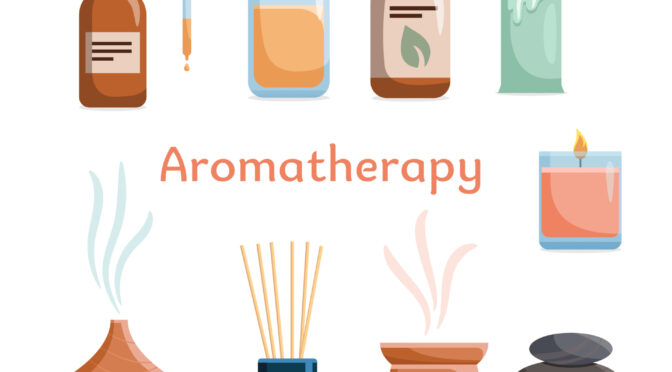
 Definition of Substance Abuse
Definition of Substance Abuse
Substance abuse: The excessive use of a substance, especially alcohol or a drug. (There is no universally accepted definition of substance abuse.)
A definition of substance abuse that is frequently cited is that in DSM-IV, the fourth edition of the Diagnostic and Statistical Manual of Mental Disorders (DSM) issued by the American Psychiatric Association. The DSM-IV definition is as follows:
- A. A maladaptive pattern of substance use leading to clinically significant impairment or distress, as manifested by one (or more) of the following, occurring within a 12-month period:
1. Recurrent substance use resulting in a failure to fulfill major role obligations at work, school, or home (e.g., repeated absences or poor work performance related to substance use; substance-related absences, suspensions or expulsions from school; neglect of children or household)
2. Recurrent substance use in situations in which it is physically hazardous (e.g., driving an automobile or operating a machine when impaired by substance use)
3. Recurrent substance-related legal problems (e.g., arrests for substance-related disorderly conduct
4. Continued substance use despite having persistent or recurrent social or interpersonal problems caused or exacerbated by the effects of the substance (e.g., arguments with spouse about consequences of intoxication, physical fights)
- B. The symptoms have never met the criteria for Substance Dependence for this class of substance.
Drug Abuse and Addiction
Many people do not understand why individuals become addicted to drugs or how drugs change the brain to foster compulsive drug abuse. They mistakenly view drug abuse and addiction as strictly a social problem and may characterize those who take drugs as morally weak. One very common belief is that drug abusers should be able to just stop taking drugs if they are only willing to change their behavior. What people often underestimate is the complexity of drug addiction-that it is a disease that impacts the brain and because of that, stopping drug abuse is not simply a matter of willpower. Through scientific advances we now know much more about how exactly drugs work in the brain, and we also know that drug addiction can be successfully treated to help people stop abusing drugs and resume their productive lives.
Addiction is a chronic, often relapsing brain disease that causes compulsive drug seeking and use despite harmful consequences to the individual that is addicted and to those around them. Drug addiction is a brain disease because the abuse of drugs leads to changes in the structure and function of the brain. Although it is true that for most people the initial decision to take drugs is voluntary, over time the changes in the brain caused by repeated drug abuse can affect a person’s self control and ability to make sound decisions, and at the same time send intense impulses to take drugs.
It is because of these changes in the brain that it is so challenging for a person who is addicted to stop abusing drugs. Fortunately, there are treatments that help people to counteract addiction’s powerful disruptive effects and regain control. Research shows that combining addiction treatment medications, if available, with behavioral therapy is the best way to ensure success for most patients. Treatment approaches that are tailored to each patient’s drug abuse patterns and any co-occurring medical, psychiatric, and social problems can lead to sustained recovery and a life without drug abuse.
Similar to other chronic, relapsing diseases, such as diabetes, asthma, or heart disease, drug addiction can be managed successfully. And, as with other chronic diseases, it is not uncommon for a person to relapse and begin abusing drugs again. Relapse, however, does not signal failure-rather, it indicates that treatment should be reinstated, adjusted, or that alternate treatment is needed to help the individual regain control and recover.
What happens to your brain when you take drugs?
Drugs are chemicals that tap into the brain’s communication system and disrupt the way nerve cells normally send, receive, and process information. There are at least two ways that drugs are able to do this: (1) by imitating the brain’s natural chemical messengers, and/or (2) by over stimulating the “reward circuit” of the brain.
Some drugs, such as marijuana and heroin, have a similar structure to chemical messengers, called neurotransmitters, which are naturally produced by the brain. Because of this similarity, these drugs are able to “fool” the brain’s receptors and activate nerve cells to send abnormal messages.
Other drugs, such as cocaine or methamphetamine, can cause the nerve cells to release abnormally large amounts of natural neurotransmitters, or prevent the normal recycling of these brain chemicals, which is needed to shut off the signal between neurons. This disruption produces a greatly amplified message that ultimately disrupts normal communication patterns.
Nearly all drugs, directly or indirectly, target the brain’s reward system by flooding the circuit with dopamine. Dopamine is a neurotransmitter present in regions of the brain that control movement, emotion, motivation, and feelings of pleasure. The overstimulation of this system, which normally responds to natural behaviors that are linked to survival (eating, spending time with loved ones, etc), produces euphoric effects in response to the drugs. This reaction sets in motion a pattern that “teaches” people to repeat the behavior of abusing drugs.
As a person continues to abuse drugs, the brain adapts to the overwhelming surges in dopamine by producing less dopamine or by reducing the number of dopamine receptors in the reward circuit. As a result, dopamine’s impact on the reward circuit is lessened, reducing the abuser’s ability to enjoy the drugs and the things that previously brought pleasure. This decrease compels those addicted to drugs to keep abusing drugs in order to attempt to bring their dopamine function back to normal. And, they may now require larger amounts of the drug than they first did to achieve the dopamine high-an effect known as tolerance.
Long-term abuse causes changes in other brain chemical systems and circuits as well. Glutamate is a neurotransmitter that influences the reward circuit and the ability to learn. When the optimal concentration of glutamate is altered by drug abuse, the brain attempts to compensate, which can impair cognitive function. Drugs of abuse facilitate no conscious (conditioned) learning, which leads the user to experience uncontrollable cravings when they see a place or person they associate with the drug experience, even when the drug itself is not available. Brain imaging studies of drug-addicted individuals show changes in areas of the brain that are critical to judgment, decision-making, learning and memory, and behavior control. Together, these changes can drive an abuser to seek out and take drugs compulsively despite adverse consequences-in other words, to become addicted to drugs.
Why do some people become addicted, while others do not?
No single factor can predict whether or not a person will become addicted to drugs. Risk for addiction is influenced by a person’s biology, social environment, and age or stage of development. The more risk factors an individual has, the greater the chance that taking drugs can lead to addiction. For example:
- Biology. The genes that people are born with-in combination with environmental influences-account for about half of their addiction vulnerability. Additionally, gender, ethnicity, and the presence of other mental disorders may influence risk for drug abuse and addiction.
- Environment. A person’s environment includes many different influences-from family and friends to socioeconomic status and quality of life in general. Factors such as peer pressure, physical and sexual abuse, stress, and parental involvement can greatly influence the course of drug abuse and addiction in a person’s life.
- Development. Genetic and environmental factors interact with critical developmental stages in a person’s life to affect addiction vulnerability, and adolescents experience a double challenge. Although taking drugs at any age can lead to addiction, the earlier that drug use begins, the more likely it is to progress to more serious abuse. And because adolescents’ brains are still developing in the areas that govern decision-making, judgment, and self-control, they are especially prone to risk-taking behaviors, including trying drugs of abuse.
Drug addiction is a preventable disease. Results from NIDA-funded research have shown that prevention programs that involve the family, schools, communities, and the media are effective in reducing drug abuse. Although many events and cultural factors affect drug abuse trends, when youths perceive drug abuse as harmful, they reduce their drug taking. It is necessary, therefore, to help youth and the general public to understand the risks of drug abuse and for teachers, parents, and healthcare professionals to keep sending the message that drug addiction can be prevented if a person never abuses drugs.
Source: National Institute on Drug Abuse









 Aromatherapy uses aromatic essential oils medicinally to improve the health of the body, mind, and spirit. It enhances both physical and emotional health, we recommed
Aromatherapy uses aromatic essential oils medicinally to improve the health of the body, mind, and spirit. It enhances both physical and emotional health, we recommed 
 he 19th century and focused on using chemical drugs. However, the French and German doctors still recognized the role of natural botanicals in treating illness.
he 19th century and focused on using chemical drugs. However, the French and German doctors still recognized the role of natural botanicals in treating illness.



.jpg)



 Smoking Kills
Smoking Kills

 As soon as we hear or read the word exercise, the first thing that comes to our mind is crunches, weight lifting, push-ups, pull-ups and other such workouts that make us drip. But, this not what exercise is all about. Such workout or weight training does help us in building our physique, but not everyone has enough time or mental strength to persevere for weight training, especially in this fast paced life.
As soon as we hear or read the word exercise, the first thing that comes to our mind is crunches, weight lifting, push-ups, pull-ups and other such workouts that make us drip. But, this not what exercise is all about. Such workout or weight training does help us in building our physique, but not everyone has enough time or mental strength to persevere for weight training, especially in this fast paced life.
 There seems to be a new movement growing n the USA; people, especially in big cities, are downsizing and starting to live in very small apartments and houses. Primarily, it is an economical decision because rent rates tend to be very high in large cities such as New York, Boston, San Francisco, and Los Angeles and smaller dwellings look like a good option for budget-conscious renters. Moreover, it seems to work the best for single people who spend most of their time at work and socialize outside. Many of the buildings with micro-apartments offer communal amenities such as gyms, media rooms, and outside recreational areas which provide the tenants with an opportunity to meet their neighbors and socialize.
There seems to be a new movement growing n the USA; people, especially in big cities, are downsizing and starting to live in very small apartments and houses. Primarily, it is an economical decision because rent rates tend to be very high in large cities such as New York, Boston, San Francisco, and Los Angeles and smaller dwellings look like a good option for budget-conscious renters. Moreover, it seems to work the best for single people who spend most of their time at work and socialize outside. Many of the buildings with micro-apartments offer communal amenities such as gyms, media rooms, and outside recreational areas which provide the tenants with an opportunity to meet their neighbors and socialize.










 Apart from being a philosophical question, living alone seems to be a practical question for many in Western world. However, first we have to define what it means to live alone. According to most researchers, it means literally living alone: there is no spouse, children, parents, or other relatives living with a person in question in his/her house. It is understandable. Given contemporary economic conditions, many people have to move frequently around the country or world to find a job. As such, close proximity to their families and friends often becomes impossible. A person has to establish a single household. According to Eric Klinenberg, the N.Y.U. sociology professor and author of the book Going Solo, in the 1950s about 22 percent of Americans households were single; nowadays the number is about 50 percent. The increase in single households is quite astonishing.
Apart from being a philosophical question, living alone seems to be a practical question for many in Western world. However, first we have to define what it means to live alone. According to most researchers, it means literally living alone: there is no spouse, children, parents, or other relatives living with a person in question in his/her house. It is understandable. Given contemporary economic conditions, many people have to move frequently around the country or world to find a job. As such, close proximity to their families and friends often becomes impossible. A person has to establish a single household. According to Eric Klinenberg, the N.Y.U. sociology professor and author of the book Going Solo, in the 1950s about 22 percent of Americans households were single; nowadays the number is about 50 percent. The increase in single households is quite astonishing.

 It is undeniable that being literate is one of the most important things a person needs to achieve in order to have a normal existence. From everyday things such as reading food labels, medication information, or household bills to more complex tasks such as reading and comprehending books and more difficult texts, reading enables a person to lead an independent and, hopefully, fulfilling life.
It is undeniable that being literate is one of the most important things a person needs to achieve in order to have a normal existence. From everyday things such as reading food labels, medication information, or household bills to more complex tasks such as reading and comprehending books and more difficult texts, reading enables a person to lead an independent and, hopefully, fulfilling life. The US Department of Education and National Center for Education Statistics differentiate between three types of literacy, “Prose literacy is the knowledge and skills needed to perform prose tasks (i.e., to search, comprehend, and use information from continuous texts, such as paragraphs from stories); document literacy is the knowledge and skills needed to perform document tasks (i.e., to search, comprehend, and use information from non-continuous texts in various formats, such as bills or prescription labels); and quantitative literacy is the knowledge and skills required to perform quantitative tasks (i.e., to identify and perform computations, either alone or sequentially, using numbers embedded in printed materials).” As such, according to their statistics dating from 2003, 22 percent of adults (those who are 16 or older) in the USA perform below basic in quantitative literacy, 14 percent of adults are below basic in prose literacy, and 12 percent in document literacy.
The US Department of Education and National Center for Education Statistics differentiate between three types of literacy, “Prose literacy is the knowledge and skills needed to perform prose tasks (i.e., to search, comprehend, and use information from continuous texts, such as paragraphs from stories); document literacy is the knowledge and skills needed to perform document tasks (i.e., to search, comprehend, and use information from non-continuous texts in various formats, such as bills or prescription labels); and quantitative literacy is the knowledge and skills required to perform quantitative tasks (i.e., to identify and perform computations, either alone or sequentially, using numbers embedded in printed materials).” As such, according to their statistics dating from 2003, 22 percent of adults (those who are 16 or older) in the USA perform below basic in quantitative literacy, 14 percent of adults are below basic in prose literacy, and 12 percent in document literacy. 

 According to the 1951 Refugee Convention, a refugee is someone who “owing to a well-founded fear of being persecuted for reasons of race, religion, nationality, membership of a particular social group or political opinion, is outside the country of his nationality, and is unable to, or owing to such fear, is unwilling to avail himself of the protection of that country.” As such, asylum seekers differ from refugees in their legal status, i.e. he or she can claim to be a refugee, but unless their claim is definitively evaluated by national asylum centers and they are granted official refugee status, an asylum seeker can be sent back to their home country. To further complicate things, in modern times millions of people choose to migrate in order to seek better opportunities for themselves and their families (for example, the so-called economic migrants), while refugees absolutely have to flee their home countries because of the fear of prosecution. As such, refugees and other types of migrants are subjects to different international and national laws.
According to the 1951 Refugee Convention, a refugee is someone who “owing to a well-founded fear of being persecuted for reasons of race, religion, nationality, membership of a particular social group or political opinion, is outside the country of his nationality, and is unable to, or owing to such fear, is unwilling to avail himself of the protection of that country.” As such, asylum seekers differ from refugees in their legal status, i.e. he or she can claim to be a refugee, but unless their claim is definitively evaluated by national asylum centers and they are granted official refugee status, an asylum seeker can be sent back to their home country. To further complicate things, in modern times millions of people choose to migrate in order to seek better opportunities for themselves and their families (for example, the so-called economic migrants), while refugees absolutely have to flee their home countries because of the fear of prosecution. As such, refugees and other types of migrants are subjects to different international and national laws. 
